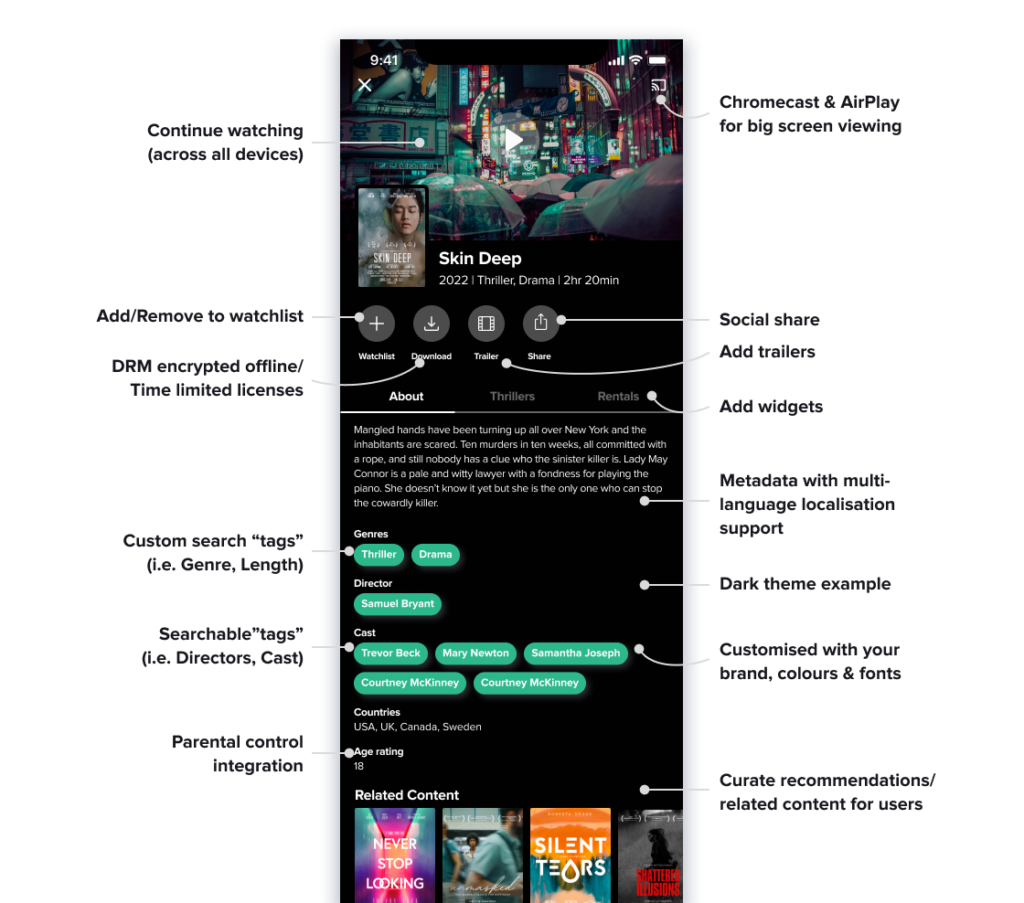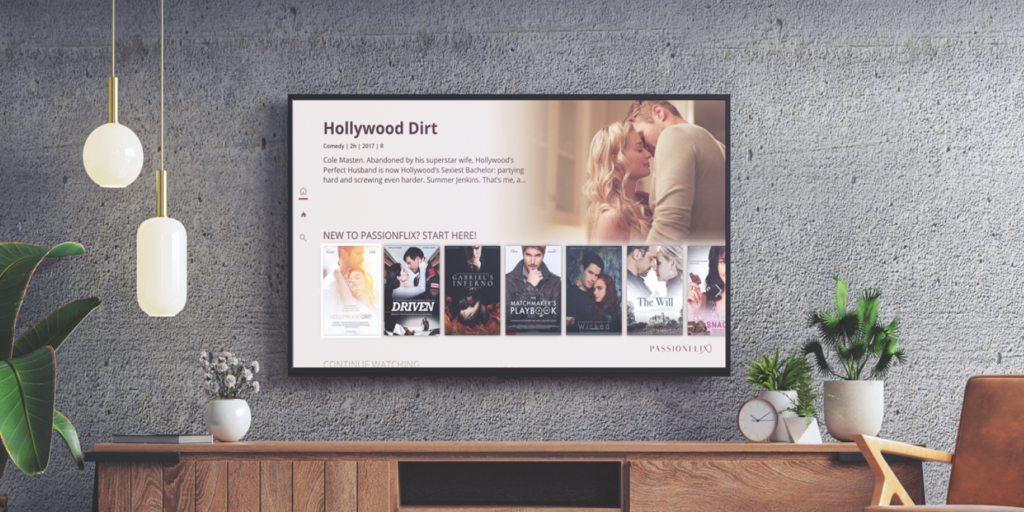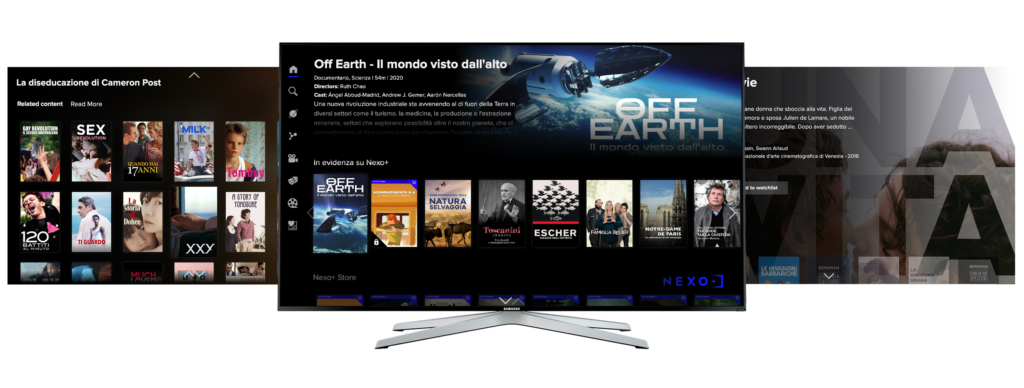Enhancing SaaS Retention: Dunning Strategies to Minimise Passive Churn
In the video streaming subscription business, retaining customers is as crucial as acquiring new ones. Passive churn, often caused by failed payment methods, can silently erode your customer base. Addressing this issue with effective dunning strategies can significantly enhance retention rates and boost your bottom line. This blog post explores passive churn optimisation, focusing on dunning retry strategies, the user journey, email communication, and key metrics.
Understanding Passive Churn
Passive churn occurs when customers unintentionally stop using a service, often due to payment failures. Unlike active churn, where users voluntarily cancel their subscriptions, passive churn is usually a result of mainly insufficient funds or expired credit cards. Addressing passive churn can save a substantial portion of revenue without the need for aggressive marketing or customer acquisition efforts.
Dunning Retry Strategies
Dunning refers to the process of retrying failed payments and communicating with customers to resolve payment issues. Effective dunning strategies can reduce passive churn by up to 30%. Here’s how to implement them:
- Retry Logic:
- Immediate Retry: Attempt to charge the card immediately after the first failure.
- Subsequent Retries: Schedule multiple retries over a period
- Communications:
- Pre-Dunning Emails: Notify users before their payment method expires.
- Post-Failure Emails: Send a series of emails after a payment fails, starting with a gentle reminder and escalating to more urgent language.
- Payment Success Notification: Confirm successful payments after retries.
The User Journey
Optimizing the user journey during the dunning process involves clear communication and a seamless experience:
- Transparent Communication: Clearly explain the issue and the steps needed to resolve it.
- Self-Service Options: Provide easy access to update payment information through a user-friendly portal.
- Support Access: Offer quick access to customer support for users who encounter difficulties.
Effective Email Content
Email communication is crucial in dunning processes. Here are tips for crafting effective emails:
- Personalisation: Address users by their names and mention specific subscription details.
- Clarity: Use simple and direct language to explain the issue.
- Call-to-Action: Include a prominent link or button to update payment information.
- Frequency: Start with gentle reminders and gradually increase the urgency.
- Segmentation: Tailor messages based on user behaviour and engagement.
Email Set-Up
To ensure your emails are delivered and not marked as spam:
- DKIM and SPF: Implement DomainKeys Identified Mail (DKIM) and Sender Policy Framework (SPF) to authenticate your emails.
- Monitor Bounce Rates: Regularly clean your email list to remove invalid addresses and reduce bounce rates.
- Track Open and Click Rates: Use analytics to measure the effectiveness of your emails and adjust strategies accordingly.
Statistics and Impact
Applying these dunning strategies can have a significant impact on your SaaS business. Here are some key statistics and metrics to consider:
- Reduction in Passive Churn: Companies can see a 10-30% reduction in passive churn by implementing effective dunning strategies.
- Recovery Rate: Track the percentage of accounts successfully recovered through dunning efforts.
- Retry Success Rate: Measure the success rate of payment retries to optimise retry schedules.
- Email Engagement: Monitor open and click-through rates of dunning emails to gauge their effectiveness.
Optimising passive churn through strategic dunning retry processes is essential for maintaining a healthy subscription service. By focusing on transparent communication, personalised email content, and effective email setup, businesses can significantly reduce passive churn and improve retention rates. Magine Pro provides a set of tools, that allow for configurable retry strategies, and fully customisable dunning emails to manage your brand and user call to action.
_____________________________________________________________________________________________
Interested in diving deeper into reducing churn? Download our latest white paper, ‘The Profit Playbook,’ for valuable insights into strategies that reduce churn and ensure long-term revenue maximisation. Additionally, explore ‘The Essentials of OTT Monetisation,’ our e-guide that delves into the intricacies of subscription, transactional, and advertising models.
If you’d like to discuss monetisation models further or explore the capabilities of Magine Pro’s advanced billing engine and dunning feature, connect with our experienced team. Visit our blog for more resources and explore our entire collection of white papers available for download. Stay updated with the latest news, events, partnerships, and product announcements by subscribing to the Magine Pro e-newsletter.
Why OTT services are switching technology platforms: The key trends driving change

Making Headway in a Maturing Streaming Market
The streaming market is maturing. Hundreds of OTT services have launched in the past few years, from gigantic launches like Disney+ to smaller services that thrive by identifying a content niche and super-serving its fans. But many of these smaller niche services got their start in OTT on low-cost technology platforms like Vimeo or Viewlift. Now they’re finding the limitations of those platforms are acting as a brake on their growth.
Naturally, switching technology platforms comes with some discomfort. Most services will hold-off as long as they can. So what makes them finally take the plunge? From the many conversations we have with OTT services every month, here are some of the key reasons they’re looking to move to a more fully-featured OTT platform. Perhaps you can identify with some (or all) of these challenges?
Being Part of The Big Screen Battle
-
- The number one complaint we hear from OTT services is that their current technology platform doesn’t allow them to reach popular Smart TV brands like LG,Samsung and Vizio. At a time when viewership on these devices is exploding, content providers can’t afford to miss the boat. Research suggests Smart TVs now account for half of all adult streaming viewing.
-
- But even where platforms can provide a tick in the box for LG and Samsung, we hear from OTT services who are disappointed to discover app support only goes back a few years or lacks the feature depth coverage or quality. With the average Smart TV having an in-home shelf-life of closer to 7-10 years, it’s important to find a platform that offers apps for older models of device.
If you’re not sure whether it’s worth making the switch to a new OTT platform to get access to Big Screen apps, we highly recommend checking out the pros and cons in our whitepaper: Go Big or Stay Small?
Maximising Revenue With Hybrid Business Models
-
-
Smaller SVOD services are looking to capitalise on the blended monetisation approaches adopted by their bigger rivals. They’d like to provide a multi-package offering, with cheaper subscriptions for viewers who are willing to watch some level of advertising, and a premium package for those who want (and can afford) to go ad-free. Or to segment their packages for different video content catalogues to offer, for example, a sports subscription, or documentary subscription as unbundled offers alongside a “total” subscription that covers both.
- Many OTT services that launched with pure SVOD now find it difficult to pivot because their technology platform doesn’t offer AVOD or doesn’t have support for ad-insertion based on the SCTE-35 markers that are used in broadcast television.
-
-
-
As with big screen support, with AVOD the devil is in the detail. Platforms that promise AVOD support often struggle to offer billing adaptability. They force content providers to choose one business model per asset, rather than supporting a choice of ways to watch the same movie or TV show.
-
At the business end, platforms often struggle with handling revenue assurance and churn prevention (active & passive churn). Often platform providers will only deliver simple dunning mechanisms, if any, rather than look at toolsets to actively manage passive and active churn.
-
You’ll find lots of OTT case studies and advice on picking the right monetisation models in our Whitepaper, The Profit Playbook.
User Experience Challenges That Damage Engagement and Loyalty
As the streaming market matures, so do the tastes of viewers. We’ve all become used to the high-quality UX of the industry’s big players and expect the same wherever we watch.
We hear constantly from OTT services that are looking to switch to a new technology platform to gain support for premium features that improve UX and have a proven impact on engagement, features like:
- AI/ML-powered personalisation of content
- Automatic trailer previews & clear user calls to action
- Full multi-language localisation of apps, metadata, and content (including support for multi-track audio and multi-language subtitles)
These features are essential to ARPU growth and churn reduction. The image below shows even more UX elements you should look out for when shopping for a new OTT platform:
Perhaps you’re also coming to realise the limitations imposed by your platform in terms of app configurability? Do your apps look just the same as all the others? Do they really speak to your brand? To really stand out and grow in the market you need the ability to choose from more than a handful of fonts, menus and languages for localising your apps. Find out more about how to build apps that are truly tailored to your brand identity here.
Solving The Headaches of Niche Streaming Services
Do these challenges sound familiar? At Magine Pro, we’ve been where you are. Having operated a B2C streaming service before offering our OTT platform as a SaaS solution to other OTT services, we know that moving platforms is a daunting prospect. But the challenges outlined above show that it’s worth making the move to a new platform that offers big-screen apps, business model flexibility, and an attractive user experience.
The trick is to find a vendor that understands your challenges and offers all the features you need for now and the future, so you don’t need to contemplate another switch in two or four years’ time. Our team has significant experience in supporting other OTT services to migrate. You’ll find more information in this recent blog post, where our Head of Engineering and Operations, Marcus Lindén, outlines the key challenges involved and walks through some of the decisions you’ll need to make to smooth your migration journey.
Ready to Overcome Your OTT Platform Limitations?
To discuss with our experts how the Magine Pro OTT platform can help you overcome some of the limitations of your existing technology provider, book a meeting with our team.
The Rise of LLMs and AGI in a Dynamic Tech Landscape
In recent years, technology hype cycles, notably Blockchains/Crypto and the Metaverse, have captured attention, spurred by a macro environment amplifying their visibility. A persistent question remains: What real-world problems do they solve, and what is their potential market reach? Despite ongoing relevance, significant behavioural barriers hinder mass adoption, such as trust issues in Crypto and social concerns in the Metaverse.
In this landscape, Large Language Models (LLMs) and the potential progress towards Artificial General Intelligence (AGI), particularly ChatGPT, have quietly emerged. They have swiftly gained user attention and recognition for their tangible value. Today, AGI is transitioning from novelty to utility, presenting two key perspectives:
Acceleration: Large Language Models (LLMs), akin to computing and the internet, serve as a transformative utility, laying the foundation for generalised applications. This empowers teams to not only access knowledge faster but also generate new solutions from existing information. The World Wide Web gave users access to the world’s knowledge, but LLMs take this a step further, by acting as the “intelligent” gateway to the knowledge and importantly being able to create new solutions from existing knowledge.
Generation: LLMs facilitate the generation of diverse content, including text, images, and gradually video, and this will inevitably disrupt workflows and the creative processes, prompting a pendulum swing between control (regulation, intellectual property safeguards) and creativity. Content generation will open the floodgates to even more User-Generated Content (UGC), by lowering the barrier to entry, but it should also augment, not replace, the creative process.
Despite its remarkable potential, we are still in the early stages of this new utility, much like when Tim Berners-Lee published his paper on the WWW. Similar to the WWW’s foundation, it will create an evolving ecosystem of services and platforms built upon LLMs. Challenges lie ahead, but opportunities will emerge. Learning and leveraging this new utility will be crucial in navigating the dynamic tech landscape impacting the future of work, businesses, and our day-to-day services.
______________________________________________________________________________________
Interested in LLMs and AGI? Reach out to the tech-savvy Magine Pro team for more insights. You can also explore our blog for more CEO insights with Matthew Wilkinson.
Learn about our flexible OTT platform and download our free white papers and ebooks on our website.
Enhancing Decision Experience (DX): A Path to Resolving Video Consumption’s Paradox
In the ever-changing media landscape, the multitude of streaming options presents a complex challenge: the more choices we have, the harder it is to decide. The ‘Paradox of Choice’ highlights our desire for autonomy and variety, but clashes with the overwhelming abundance of options. As streaming platforms expand, we spend excessive time choosing content, often overshadowing the enjoyment itself. Studies show that Netflix members lose interest after 60 to 90 seconds of browsing (source: “The Netflix Recommender System: Algorithms, Business Value, and Innovation” 13.2).
The Paradox of Choice and Human Behaviour:
The ‘Paradox of Choice’, while choice signifies freedom, an abundance of options often triggers cognitive overload and decision fatigue. This phenomenon is particularly evident in streaming services, where consumers often enter without a specific viewing preference. In this context, the complexity of decision-making is compounded when multiple people are involved, such as when sharing a TV. In streaming, each choice demands a significant investment of time, often 1-2 hours (as in a movie scenario), prompting meticulous evaluation. A simple decision can quickly morph into a laborious task, ultimately detracting from the anticipated enjoyment and potentially prompting consumers to switch services. The paradox highlights the intricate interplay between the allure of choice and the complexities it introduces in the content-rich landscape of the digital era.
Streaming’s Paradox: The Holy Grail of Recommendation & The Endless Scroll:
Streaming platforms, once celebrated for their convenience, now confront the very paradox they aimed to alleviate. By harnessing AI and machine learning, these platforms can extract nuanced insights into user preferences, behaviours, and interests. Despite the sophistication of these AI algorithms, which provide personalised recommendations, users often find themselves endlessly scrolling. While AI-driven recommendations undoubtedly enhance the experience and offer a superior selection, the user is still left with an abundance of choices. In essence, they must make a decision from an overwhelming array of good options, underscoring the challenge’s complexity. The solution lies not solely in refining recommendation engines, but also in focusing on the Decision Experience (DX) through UX/UI design choices. This strategy embraces the idea that less can be more, offering a manageable selection that amplifies user satisfaction, particularly within the realm of UX/UI design.
Simplifying the Choice-Making Process:
While personalised curation streamlines selection, optimising choices among high-quality options necessitates a dual focus on UX (User Experience) and UI (User Interface) design with an underpinning principle of DX (Decision Experience). The digital environment significantly shapes how choices are perceived and navigated. Streamlined categorization, thoughtfully designed layouts, and interactive features empower users, expediting the Time to Decision (TTD).
Design patterns rooted in ‘nudge theory’ (more here) can further guide users toward decisions. UX/UI strategies, such as spotlighting a single option on a focused screen or employing persuasive copy like “you should watch…,” or “pick up where you left off,” can encourage choices through subtle nudges. These nudges can leverage social conformity or cohesion, like displaying ‘Top 10 Movies in Your Country,’ and are even more effective when endorsed by a trusted individual (‘recommended by your friend’).
Drawing insights from various digital platforms, like Airbnb’s user-friendly interface for search and booking. Intuitive filters, clear visuals, and a streamlined booking process heighten the DX and accelerate the TTD. Users can quickly narrow down accommodation options and make confident selections, as the platform exemplifies effective choice-nudging design.
Employing design patterns that prompt decisions, such as “you should watch this title,” or limit choices, like “Watch this Film,” can further enhance the DX. This approach demonstrates how strategic UX/UI interventions can transform the decision-making experience, guiding users toward satisfying choices.
Contents Role in Mitigating the Paradox:
Content itself can act as a remedy for the content choice paradox. Serial content, like TV series, notably reduces decision-making complexity. Once viewers become engrossed in a series, consistent returns mitigate the need for repeated choices. Conversely, standalone movies require fresh decisions, contributing to cognitive overload. Content continuity streamlines Time to Decision (TTD) and amplifies user engagement.
When exploring user-generated content, especially short-form content, the minimal time investment reduces overthinking and decision-making hesitancy. Platforms like TikTok, employing a constrained UX in their ‘reels’ feature, presenting one video at a time and enhancing data feedback loops. Similar patterns can be observed on Netflix, where videos are autoplaying in full, rather than trailers, prompting choices after the video has started. These design approaches effectively curtail choice-related burdens and contribute to more streamlined decision-making processes.
Learning from TikTok’s Success: A Lesson in UI/UX Design:
TikTok’s minimalist design offers a compelling solution to the content choice paradox through its effective UI/UX. By offering users a continuous stream of personalised short videos, TikTok relieves the burden of decision-making (more can be read on this here). Its design fosters immersion without overwhelming choices. This emphasises the importance of an intuitive UI/UX in simplifying choice complexity and enhancing content enjoyment. TikTok’s approach highlights the significant impact of a well-crafted interface on the Time to Decision (TTD) and overall user satisfaction. Notably, the TikTok UX/UI experience minimises the time between starting content and scrolling past it, thanks to thoughtful design and singular device usage (typically one user scrolling on one device).
Netflix has taken a similar approach to enhance decision-making on mobile devices with its “Fast Laugh” feature. This short-form preview provides a genre-specific snippet of content, specifically designed for quick consumption, setting it apart from conventional movie trailers. This adaptation illustrates how platforms can leverage efficient decision-making principles inspired by TikTok’s model (more here).
Yet, as the landscape shifts toward traditional video streaming, especially with larger screens in focus, exploring shared social decision-making becomes relevant. Platforms must innovate ways to enhance collective decision-making, moving beyond reliance on individual remote control usage. Envisioning shared, social big-screen viewing prompts reimagining the user experience to facilitate collective decision-making, thereby enriching the content discovery journey in a more engaging and inclusive manner.
To Conclude:
In navigating the content choice paradox of streaming, three key concepts emerge:
- Curation and Personalisation: Prioritising tailored content through curation and personalisation reduces choice overload, guiding users to satisfying selections and streamlining Time to Decision (TTD).
- User Experience (UX) and User Interface (UI) & Decision Experience (DX) Design: patterns, inspired by ‘nudge theory,’ simplify decision complexity, empowering users to make confident choices and minimising decision fatigue.
- Content Continuity and Short-Form Engagement: Embracing content continuity, particularly with serial TV series, and leveraging user-generated short-form content curbs cognitive burden, enhancing overall decision-making.
By harmonising these approaches, streaming platforms can reshape the discovery journey, converting choice into a conduit for enriched entertainment experiences, where ease, engagement, and enjoyment converge.
________________________________________________________________________________________
Keen to discuss how OTT can enhance the decision experience for audiences further? Book a meeting or get in touch with the Magine Pro team. We also have some useful insights and resources available on our blog and free to download white papers, ebooks and more.
CTV: How Connected TV can drive engagement & lifetime value for OTT
CTV (connected TV) has the capability to change viewer behaviour, drive engagement and increase lifetime value for OTT operators. In this blog, we explore how.
Online video streaming services have revolutionised how we all watch TV and movies. In the early days, marketing around these services focused heavily on the idea of cord-cutting, the freedom to watch what you want, when you want and wherever you are. You were no longer tied to the TV or house; you could catch up and stream your TV shows and movies on mobile devices anywhere. And although we all can watch ‘on the go’ (and most do), it hasn’t changed the fact we still enjoy the traditional TV experience.
Consuming streaming video via TV was limited early on. As such, secondary streaming devices (gaming console, Chromecast, set-top boxes) were an easy add-on to access the latest apps without upgrading your TV. But, the user experience had friction and made the TV the secondary interface to content discovery; the TV was there purely to display the streaming video.
We’re now seeing major TV manufacturers take back ownership to remain the centre of home entertainment and content discovery. Samsung and LG are leading the market share with the next generation of connected TVs (48% in 2021 by revenue). In fact, according to Conviva’s state of streaming Q4 report 2021, big-screen viewing on smart TVs was up 37% from Q4 2020. And the report also highlighted a noticeable decrease in viewing from secondary streaming devices (games consoles, for example, saw a -16% reduction in viewing), confirming a change in behaviour as viewers opt for built-in capabilities.
How do Connected TV Applications change consumer behaviour?
Expanding the availability of streaming services to connected TV devices impacts how users engage with a streaming service and content. At Magine Pro, we enable our partners to expand to the big screen with streaming applications for LG & Samsung devices. Based on an analysis of our partner data, here are some insights into the impact connected tv applications have on user behaviour.
- Increasing viewing time & engagement – Analysis of a Magine Pro’s partner 2021 data shows that users with an LG/Samsung TV watched on average between 19% and 54% more hours of video, compared to users that didn’t watch on those devices (this range is likely due to type of service, some seasonality impacts and other factors).
- Therefore it’s not surprising that with an increase in user engagement and viewed hours per user, we’re also seeing a 12%-14% increase in the customer lifetime of the same user cohort that views content on LG & Samsung devices.
- The overall data also shows that total viewed hours across all users on LG & Samsung also increased by +7%.
- Increase Audience Reach – With LG and Samsung taking 48% revenue market share of TV devices in 2021, it’s no surprise that adding Apps to these TV devices will give you a much larger audience reach as they become de-facto TV’s in the home.
 Magine Pro’s premium applications for Samsung & LG Smart TV Devices
Magine Pro’s premium applications for Samsung & LG Smart TV Devices
Magine Pro has developed premium streaming applications for Samsung & LG Smart TV Devices for the last six years, allowing our video streaming services to reach audiences globally through custom applications.
Our partners that operate Magine Pro built video streaming services, including big-screen applications, benefit from:
- Access to Magine Pro’s CMS Console, enabling partners to independently curate and publish content, make application configuration changes, apply branding and design to their service and more.
- Support for movies, series and episodes, and live events with ‘Continue Watching’ and ‘My Watchlist’ across user accounts.
- Custom menus & setup per TV Manufacturer.
- Support for multiple stereo, 5.1 & subtitling tracks allowing for language localisation.
- Geo-targeting of content, enabling our partners to determine releases in each country.
- Complete language localisation allows viewers to consume the service in their local language.
- Analytics, allowing for insights on service consumption on all applications.
Get in touch if you want to find out more about our connected TV portfolio, which is fast to release, and where Magine Pro takes care of all of the software updates, bug fixes and new product features.
__________________________________________________________________________________
To learn more about Magine Pro’s video streaming services that are accessible via the web, mobile devices and Connected TVs get in touch. You can also head over to our experience page to find out more about our partners. And sign up for our newsletter to get updates on our latest news, partners and blog post.
Seasons Greetings from our CEO, Matthew Wilkinson
A year ago, we were all hoping that the new decade would bring us new opportunities and challenges. Still, none of us could have foreseen how extreme & personal those challenges would be. Each one of us, every industry, every geography, culture has been impacted.
The media sector has seen the impact at both ends of the spectrum (production slow down, cinema distribution stopping etc.) and the opportunities (digital distribution, engaging audiences directly etc.). However, we have yet to see the longer-term trends play out. People are hungry for social interaction & real-world experiences. Ultimately, in the short term, we’ve been forced into and taken advantage of accelerated digitisation and disruption of traditional business models.
Magine Pro has seen a 50% growth in new partners joining the digital journey via the Magine Pro platform in 2020 and accelerated growth relating to existing partners (347% increase year on year with average monthly active users). These increases have been driven by new partners, the COVID 19 pandemic, and new exclusive content on our partners’ services. We are enabling our partners to capitalise on the opportunities with direct-to-consumer products, and strengthening Magine Pro’s position in the market as we continue to grow and build on our world-class platform, which in turn will help our partners succeed – full circle.
We anticipate that in 2021, new opportunities will arise, different challenges will come to bear, and that Magine Pro is well-positioned to continue to support our partners, meet accelerated transformation & growth objectives.




 Magine Pro’s premium applications for Samsung & LG Smart TV Devices
Magine Pro’s premium applications for Samsung & LG Smart TV Devices